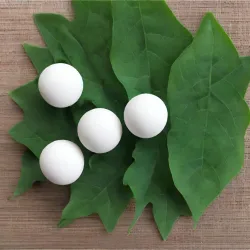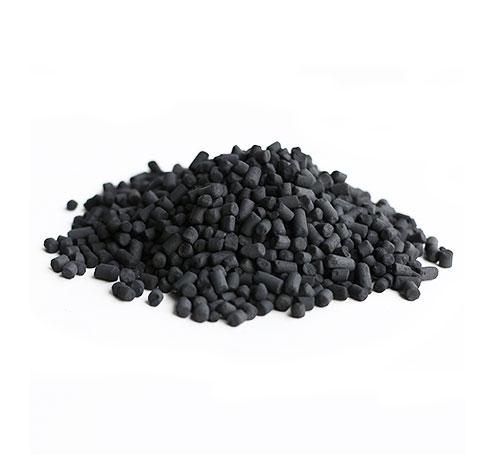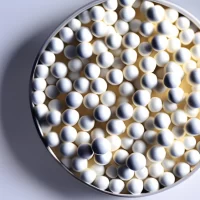Silica gel packets, those unassuming sachets found nestled in the packaging of various products, are the unsung heroes in the battle against moisture.
In this comprehensive blog, we delve into the intricacies of silica gel packets, exploring their composition, the science behind their moisture-absorbing properties, and the wide-ranging applications that make them indispensable in our daily lives.

Silica Gel Packets
Silica gel packets are small pouches or sachets filled with silica gel, a desiccant that is highly effective at absorbing and holding moisture. These packets are commonly found in the packaging of various products to protect them from the harmful effects of humidity during storage and transportation.
The primary component of silica gel is silicon dioxide, and it is known for its porous and granular structure. The high surface area and microscopic pores of silica gel enable it to attract and trap water molecules, making it an excellent desiccant.
Silica gel packets come in various sizes and are often transparent or semi-transparent, allowing you to see the silica gel beads or granules inside.
They are frequently used in a range of industries, including electronics, pharmaceuticals, food packaging, and more. The packets are labeled with warnings such as "Do Not Eat" and "Keep Out of Reach of Children" to prevent accidental ingestion or misuse.
One notable feature of some silica gel packets is the inclusion of indicator crystals that change color as they absorb moisture.
These indicators can help users determine the saturation level of the silica gel, indicating whether it needs to be replaced or regenerated. Silica gel packets are valued for their ability to control humidity, prevent mold growth, and protect items that are sensitive to moisture, such as electronics, documents, leather goods, and certain foods.
They are also known for their reusability, as the silica gel can be regenerated by heating to release the absorbed moisture, making them a cost-effective and environmentally friendly solution for moisture control.
What is Silica Gel Used For?
Silica gel packets are used for moisture control in various applications due to their excellent desiccant properties. Here are some common uses:
Electronics: Silica gel packets are often included in the packaging of electronic devices to absorb moisture and prevent condensation. This helps protect sensitive electronic components from corrosion and damage.
Pharmaceuticals: Medications and medical supplies are susceptible to moisture damage. Silica gel packets are commonly used in pharmaceutical packaging to maintain the integrity and effectiveness of medications.
Food Packaging: Silica gel is employed in the food industry to control moisture levels in packaged food items. It helps prevent spoilage, mold growth, and the degradation of texture and quality in products like snacks, dried fruits, and spices.
Documents and Valuables: Silica gel packets are often placed in storage containers, safes, or archival boxes to protect important documents, photographs, and valuables from moisture-related damage.
Leather Goods and Clothing: Silica gel helps prevent mold, mildew, and musty odors in leather goods, shoes, and clothing by absorbing excess moisture.
Storage of Collectibles: Silica gel is used to protect collectibles, such as coins, stamps, and vintage items, from the detrimental effects of humidity during storage.
Flower Preservation: Silica gel is a popular choice for drying and preserving flowers. It maintains the shape and color of the flowers while absorbing moisture.
Toolboxes and Equipment Storage: Silica gel packets are placed in toolboxes and containers to prevent rust and corrosion on tools and equipment.
Camera and Optical Equipment: Silica gel helps protect cameras and optical equipment from moisture, preventing fogging and preserving the clarity of lenses.
Gym Bags and Shoes: Placing silica gel packets in gym bags and shoes helps control moisture, preventing the growth of bacteria and fungi that cause unpleasant odors.
Art and Museum Conservation: Silica gel is used in museums and art conservation to control humidity and protect artifacts and artworks from deterioration.
The versatility of silica gel packets makes them a widely used and effective solution for preventing the harmful effects of moisture in various industries and everyday scenarios.
What Do Silica Gel Packets Do?
Silica gel packets serve as desiccants, meaning they are designed to absorb and hold moisture. Here's an overview of what silica gel packets do:
Moisture Absorption:
- The primary function of silica gel packets is to absorb moisture from the surrounding environment. The porous structure of silica gel allows it to attract and hold water molecules, making it an effective tool for controlling humidity.
Preventing Mold and Mildew:
- By absorbing excess moisture, silica gel helps prevent the growth of mold, mildew, and bacteria. This is particularly important in environments where humidity levels are high, as mold and mildew can cause damage to various materials.
Protecting Against Corrosion:
- Silica gel is commonly used to protect items prone to corrosion, such as electronic devices and metal components. By controlling humidity levels, silica gel helps prevent the formation of rust and corrosion on sensitive materials.
Preserving Valuables:
- Silica gel packets are often included in the packaging of products to protect valuables like electronics, leather goods, and important documents during storage and transportation. This helps maintain the quality and integrity of these items.
Extending Shelf Life of Food Products:
- In the food industry, silica gel is used in packaging to absorb moisture and extend the shelf life of various food products. It prevents moisture-related issues, such as clumping, mold growth, and loss of freshness.
Reducing Odors:
- Silica gel can help control odors by absorbing excess moisture that can contribute to the growth of odor-causing bacteria and fungi. This is why it is often placed in shoes, gym bags, and other enclosed spaces.
Flower Preservation:
- Silica gel is used for drying and preserving flowers. By removing the moisture from the flowers, silica gel helps maintain their shape, color, and overall appearance.
Preventing Fogging:
- Silica gel is effective at preventing fogging in various optical equipment, such as cameras and lenses. By controlling humidity, it helps maintain clear visibility.
Tool and Equipment Protection:
- Silica gel packets are placed in toolboxes and with equipment to prevent rust and corrosion on tools and metal components. This is crucial for preserving the functionality and longevity of tools.
In summary, silica gel packets are moisture-absorbing agents that find widespread use in protecting a variety of items and materials from the damaging effects of humidity.
Are Silica Gel Packets Toxic?
Silica gel itself is generally considered non-toxic and safe. It's a chemically inert and stable substance made from silicon dioxide, which is found naturally in quartz. Silica gel is commonly used in various products, including food and pharmaceutical packaging, to control moisture and prevent spoilage.
However, while silica gel is not toxic, the packets often come with warnings such as "Do Not Eat" or "Keep Out of Reach of Children." The concern is not about the silica gel itself but rather the potential hazards associated with accidental ingestion or misuse of the packets. Silica gel packets are small and can pose a choking hazard, especially for young children or pets.
In some cases, silica gel packets may contain indicator crystals that change color as they absorb moisture. These indicators can include substances like cobalt chloride, which is classified as a possible carcinogen and may be harmful if ingested in large amounts. However, the use of cobalt chloride in consumer products has decreased over time due to its potential health risks.
To ensure safety:
Do not ingest silica gel packets: While the silica gel itself is not toxic, the packets may contain other substances or additives. If ingested in large quantities, it could lead to health issues.
Keep out of reach of children and pets: Silica gel packets are not meant to be eaten, and the warnings are in place to prevent accidental ingestion. Store them in a place that is inaccessible to children and pets.
If accidental ingestion occurs or if there are concerns about exposure, it's advisable to seek medical advice. Always follow the safety instructions provided by the manufacturer and take appropriate precautions to prevent accidental contact or ingestion of silica gel packets.
Can You Put Silica Gel Packets In Food?
Silica gel packets are not intended to be ingested, and they should not be put directly into food or used as a food ingredient. The primary purpose of silica gel in the context of food is to control moisture levels within the packaging, helping to preserve the quality and freshness of the food.
Silica gel is commonly used in packaged foods, especially those prone to moisture-related issues such as clumping, spoilage, or loss of texture. It is placed in the packaging to absorb excess moisture, preventing these problems and extending the shelf life of the product.
However, the silica gel packets themselves are not meant to be consumed. They may contain small amounts of additives or indicators. While the silica gel itself is generally considered non-toxic, these additional components may not be suitable for ingestion.
If you find a silica gel packet in packaged food, it's essential to remove it before consuming the product. It's not designed to enhance the flavor or quality of the food; rather, its purpose is to maintain the product's freshness during storage and transportation.
Always follow the instructions provided by the food manufacturer and be aware of any warnings or indications regarding the presence of silica gel packets in the packaging. Suppose you have specific concerns about the safety of a particular product or its packaging. In that case, it's advisable to contact the manufacturer for clarification.
How Long Do Silica Gel Packets Last?
The lifespan of silica gel packets can vary depending on several factors, including their usage, environmental conditions, and the quality of the silica gel. Here are some considerations:
Saturation Level:
- Silica gel packets have a limited capacity to absorb moisture. The more they absorb, the closer they get to their saturation point. Once saturated, they become less effective. Regularly regenerating or replacing saturated silica gel ensures continued efficiency.
Environmental Conditions:
- The rate at which silica gel reaches its saturation point can be influenced by environmental conditions. In high-humidity environments, silica gel may reach its limit more quickly. Conversely, in drier conditions, it may last longer between regenerations.
Regeneration:
- Silica gel is reusable. Properly regenerating it by removing the absorbed moisture allows you to extend its lifespan. Regeneration is typically done by heating the silica gel to release the trapped moisture.
Quality of Silica Gel:
- The quality of the silica gel can impact its lifespan. Higher-quality silica gel is designed for durability and repeated use. Lower-quality or less robust silica gel may reach its limit more quickly.
Storage Conditions:
- Silica gel should be stored in airtight containers when not in use to prevent it from absorbing moisture from the surrounding environment. Proper storage helps maintain its effectiveness over time.
Indicator Crystals:
- Silica gel packets with indicator crystals may have a limited lifespan for indicating moisture absorption. The color-changing properties of the indicators may diminish over time, but this doesn't necessarily affect the silica gel's ability to absorb moisture.
As a general guideline, silica gel packets can last for several months to a few years, depending on the factors mentioned above. Regularly checking and, if necessary, regenerating or replacing silica gel packets helps ensure their continued effectiveness in controlling moisture. Always follow the manufacturer's guidelines for regenerating and reusing silica gel.
Can You Reuse Silica Gel Packets?
Yes, silica gel packets are often reusable, and you can regenerate them to restore their moisture-absorbing capacity. Silica gel is a desiccant, which means it has the ability to absorb and hold moisture. Over time, as silica gel absorbs moisture, it reaches its saturation point, becoming less effective. However, by removing the absorbed moisture through a regeneration process, you can reuse the silica gel.
Here's a general guide on how to regenerate silica gel packets:
Check the Packets:
- Ensure that the silica gel packets are still in good condition and have not been damaged. Damaged packets may not be suitable for regeneration.
Preheat an Oven:
- Preheat an oven to a low temperature, typically between 200°F (93°C) and 250°F (121°C). This low heat helps release the absorbed moisture without damaging the silica gel.
Spread Silica Gel:
- Spread the silica gel beads or granules evenly on a baking sheet. Avoid overcrowding to ensure uniform regeneration.
Bake Silica Gel:
- Place the baking sheet in the preheated oven and bake the silica gel for about 1 to 2 hours. The exact time may vary depending on the size of the packets and the oven temperature.
Monitor Color Change (if applicable):
- If the silica gel packets contain indicator crystals that change color when saturated, monitor the color change during regeneration. The crystals should revert to their original color as the moisture is released.
Cool Before Use:
- Allow the regenerated silica gel to cool before using it again. Once cooled, the silica gel is ready to absorb moisture once more.
It's important to note that while many silica gel packets can be regenerated, the process may not be effective if the packets are damaged or if they have been exposed to substances that may affect their performance.
Regularly regenerating silica gel packets can extend their lifespan and make them a cost-effective and environmentally friendly solution for moisture control. Always follow any specific instructions provided by the manufacturer for regenerating silica gel products.
Conclusion
Silica gel packets emerge as unsung heroes in the realm of moisture management, exhibiting a versatility that extends far beyond their diminutive size.
These unassuming sachets, filled with silica gel desiccant, play a crucial role in preserving the integrity of various items, from electronics to cherished memorabilia.
With their innate ability to absorb and control moisture, silica gel packets act as silent protectors, thwarting the detrimental effects of humidity on products, preventing mold, and ensuring longevity.




